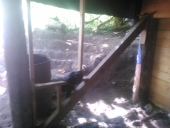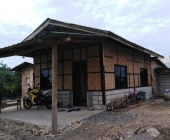





 4
4





 15
15




For all your Montana Masonry Heater parts (also known as) Rocket Mass heater parts.
Visit me at
dragontechrmh.com Once you go brick you will never go back!
 6
6




 7
7




I make a Maple Syrup instructional movie! Check it out HERE
SKIP books, get 'em while they're hot!!! Skills to Inherit Property
See me in a movie building a massive wood staircase:Low Tech Lab Movie
 3
3




 4
4




This is all just my opinion based on a flawed memory

 7
7




 2
2




Moderator, Treatment Free Beekeepers group on Facebook.
https://www.facebook.com/groups/treatmentfreebeekeepers/





 10
10




Visit Redhawk's soil series: https://permies.com/wiki/redhawk-soil
How permies.com works: https://permies.com/wiki/34193/permies-works-links-threads
 4
4




 2
2




 2
2




 5
5




 5
5




Does anyone else have experience with them? (Round piles)
 4
4




 1
1




B Burns wrote:This year we realized that a firewood shed was not going to make it on the priority list. That forced is to look for alternatives. We came across these round stacks and are now questioning if we will ever need to build a shed. We put wood pallets down first to increase airflow. So far they seem to be easier to deal with than a linear stack, we don’t have any long term experience to say how well they dry wood long term, but all indications are good for now.
https://baileylineroad.com/how-to-video-on-stacking-firewood/
Does anyone else have experience with them?
Maybe Life is always like being on a trapeze or a tightrope at the circus...
 2
2




 5
5




I make a Maple Syrup instructional movie! Check it out HERE
SKIP books, get 'em while they're hot!!! Skills to Inherit Property
See me in a movie building a massive wood staircase:Low Tech Lab Movie
 2
2








Mike Haasl wrote:We've done round holzhausens or holzmiters (I think those are the approximate names) for the past 5 years or so. It took a while to get them working and they have their pros and cons for us. Ours are about 10' diameter and 6-9' tall.
First year: One tubular stack of wood and filed the middle with round logs standing on end. Whole works on a layer of pallets. Logs in middle weren't dry after 3 years, needed to jumble them.
Next: Two tubular stacks (double ring) with nothing in the middle. Double layer of pallets with tarp underneath to keep grass from filling in and blocking the airflow. This worked great, wood dry in under 3 years (our cutting/burning cycle)
Next: Added cribbing stack in the middle to get a bit more wood in. Worked fine.
This year: Got sick of painstakingly stacking the wood in a circle. Trying a square stack 10' by 10' by 7'. Holds even more wood and looks sexy in a different way. If it doesn't fall over I'll post some pics.
Notes:
- Long poles across the pile are a great idea
- Roof of shingled boards, tarp or metal roofing is great
- Dismantling is more of an "all at once" affair since once you tear in the roof it gets compromised. We move the year's wood closer to the house over the course of a few days.
- Aim for a gumdrop shape. Vertical sides will soon become past vertical and you'll be putting a belt on the stack to keep it from shifting more.
- It's very stable. If you have neighborhood kids around these piles won't tip over. I doubt you could push one over with a truck unless you got a good run at it.
Maybe Life is always like being on a trapeze or a tightrope at the circus...
 3
3




I make a Maple Syrup instructional movie! Check it out HERE
SKIP books, get 'em while they're hot!!! Skills to Inherit Property
See me in a movie building a massive wood staircase:Low Tech Lab Movie




Mike Haasl wrote:Yes, I'd mostly agree. I'd build the stacks in a good place, not necessarily where the trees are cut down. I think wind is the main way they dry. Probably what you meant too but figured I'd be clear...
At least the way we build ours, we wouldn't want to be disassembling them throughout the winter. They'd be buried in snow and getting wet as they sit half consumed. They are still stable while you're digging out one side so it's not a safety risk.
Maybe Life is always like being on a trapeze or a tightrope at the circus...
 3
3




I make a Maple Syrup instructional movie! Check it out HERE
SKIP books, get 'em while they're hot!!! Skills to Inherit Property
See me in a movie building a massive wood staircase:Low Tech Lab Movie
 3
3




 5
5




 4
4




 1
1








 3
3




 4
4




As far as tarps go, I haven't found any that will out-last and old swimming pool liner.
 4
4




 7
7




Om is where the heart is.
 5
5





 9
9





|
You may have just won ten million dollars! Or, maybe a tiny ad.
The new purple deck of permaculture playing cards
https://www.kickstarter.com/projects/paulwheaton/garden-cards
|






